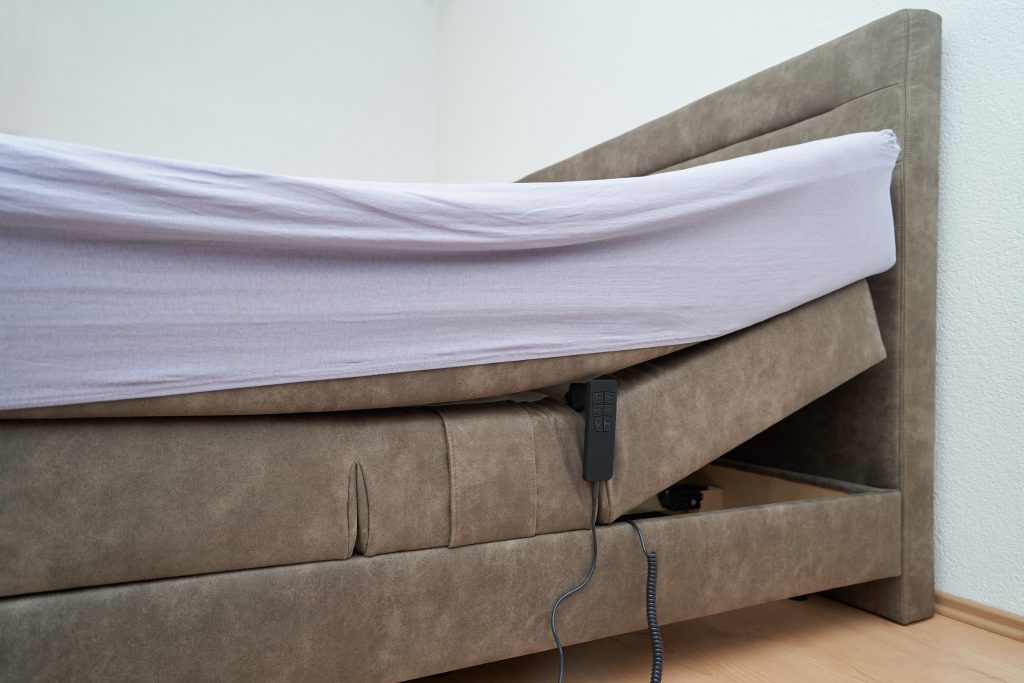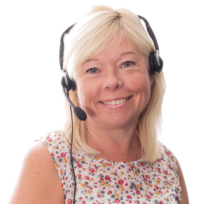The best equipment to help you care for a loved one at home
Caring for a loved one at home comes with plenty to think about. On a practical level, people with disabilities or their carers can require equipment that assists them day-to-day, and – particularly for those new to the physical demands of personal care – it can feel like a minefield deciding what will best support their needs.
With that in mind, we’re going to take a look at some of the most common types of equipment used in home care and how they can help support your loved one’s independence, mobility, and comfort as well as your own caring role.
Moving around the home
Firstly, we’ll take a look at equipment designed to improve or enable mobility around the home itself.
Many disabled people can use mobility-focused equipment to improve their own quality of life, which is beneficial for both you and your loved one, reducing the level of care needed and allowing for greater independence.
- Stairlifts
Stairlifts allow someone with limited mobility to travel between floors of a home with the use of a chair or platform attached to a track, usually mounted to the wall alongside a staircase. Whether your loved one has the capacity to use the stairlift independently or it’s being used alongside other mobility aids such as wheelchairs, this can be invaluable when relocating to a single-level home isn’t a possibility. Click here to learn more about our specialist Stairlift Insurance.
- Rollators
A type of walking frame that offers stability and easy movement thanks to its wheels, a rollator is ideal for someone who still has the ability to walk but wants extra support. It can help reduce the risk of trips and falls, and – as a relatively small, mobile item – is easy to get hold of and use.

- Ramps
A simple and effective way to tackle changes in floor level: ramps make steps inside or outside the home more accessible to someone in a wheelchair or with a limited range of movement where using steps could be tricky. Many of them are portable, too.
- Grab rails
Grab rails can be placed anywhere they’re needed in the home to assist with mobility – common spots are bathrooms, next to steps, and by beds. Providing stability and reducing the risk of falls, they’re easy to install and relatively cheap, adding security without breaking the bank.

- Lifting and transporting
Some people will require disability aids that assist their carers in moving them – for example, from their bed to a wheelchair, or from in and out of a bath. There are a number of tools for this purpose, helping carers lift their loved ones safely. It’s important to note that many lifting and hoisting tools require a level of training to use safely – seek out training or support from your loved ones’ care team for help understanding best practice.
- Bed hoists (and slings)
Bed hoists come in a number of different forms depending on a person’s needs, but they largely consist of a sling or seat with a motorised lifting arm. This allows a carer to place the sling underneath someone in bed or in a chair, secure the handles to the hoist, and use the motorised arm to lift them up. Some come with the ability to turn in different directions, and they can be mounted, free-standing, or even mobile for use outside the home. Check out our quick guide to ceiling and mobile hoists.
- Ceiling track
Used alongside a hoist, a ceiling track is exactly that – a track installed along the ceiling, with a mechanism that allows a carer to transport someone with limited mobility around the house in a sling. These are often used between a bedroom and bathroom to make personal care easier and safer.
- Bath lifts
On the topic of personal care, bath lifts are a mechanised tool installed over a bathtub that assists in raising and lowering a person into the water. As bathing can be slippery and dangerous for those with disabilities, this can be a lifeline for disabled people and their carers when installing a wet room or floor-level shower isn’t possible. For more information, check out our guide to bath hoists and aids.
- Transfer boards
Perhaps the handiest and simplest carers’ equipment available, transfer boards are simply sturdy (usually plastic) boards that allow a person to be transferred from one surface to another – such as from a stationary chair to a wheelchair or into a car.
- Comfort
While many disability aids are purely practical, some are also key for comfort. Beds and chairs that a person spends a significant amount of time in can be adapted to specific needs, helping improve their comfort as well as their care.
- Adjustable beds
There are countless types of disability-friendly beds, but almost all include some form of adjustable positioning. This can be helpful for those whose medical needs require a particular sleeping position, and for helping those who are bed-bound sit up to eat, take medication and socialise. There are also airflow beds that help avoid pressure sores by constantly adjusting the area of the body which is being supported by the mattress. Learn more about accessible beds here.

- Lifting chairs
Lifting chairs come with motorised lifts inside which raise the seat until the person is in a
position to stand (if they have full weight bearing ability) or be transferred to a wheelchair or hoist. They are typically operated by a few buttons, making them easy and intuitive to use.
…and everything else!
There are an enormous variety of tools carers and their loved ones can use to assist in day-to-day care, personal care and improving of quality of life for those with disabilities. These range from tiny – such as disability aids to help people put on their own socks and shoes safely – to full in-home lift installations. The most important thing is that your loved one’s safety and comfort need not be compromised by being at home, and that your ability to care for them can be greatly assisted by using some of the disability equipment available.


